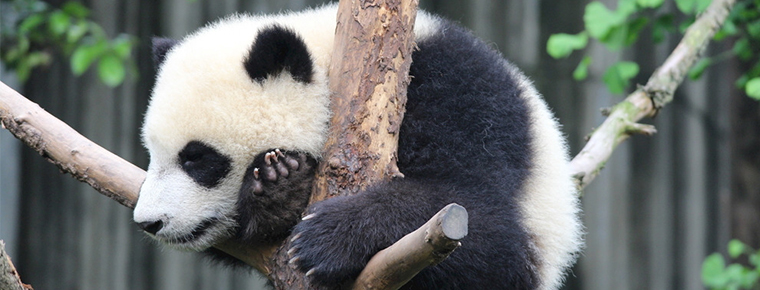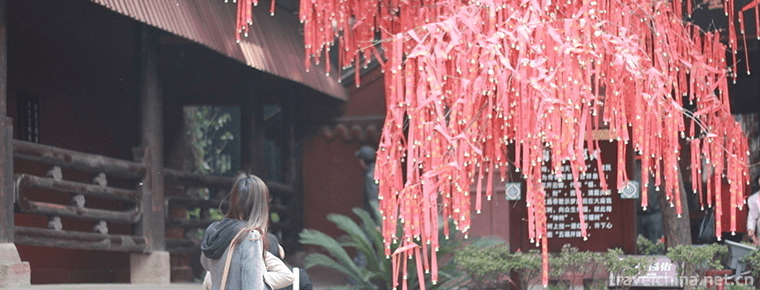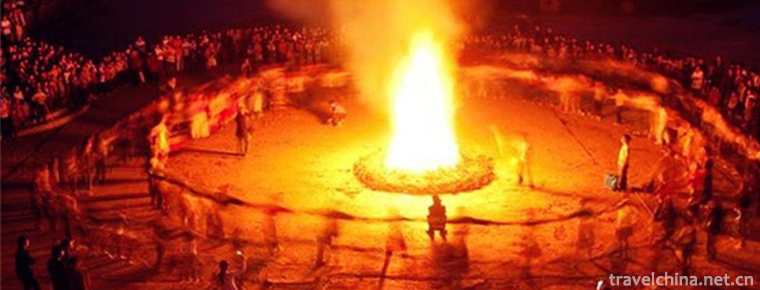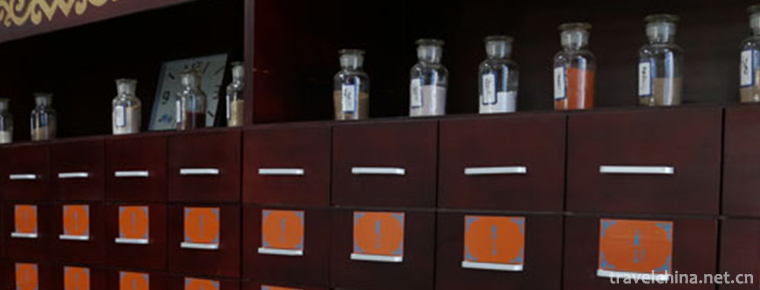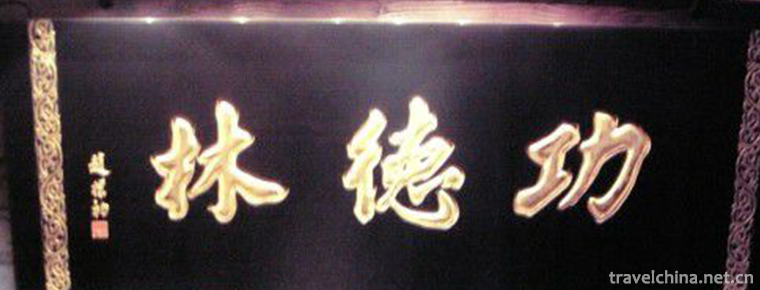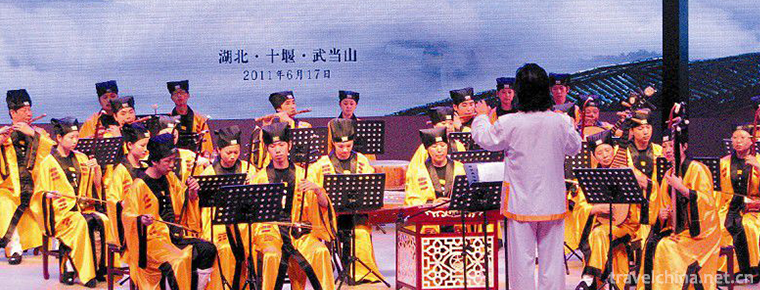Han Embroidery
Han Embroidery
Han embroidery, one of the traditional embroidery techniques with Chinese characteristics, is based on Chu embroidery, which combines the merits of various embroidery methods from the north and the south, and has developed a new embroidery method with distinctive local characteristics.
Han embroidery is mainly popular in Jingzhou, Jingmen, Wuhan, Honghu, Xiantao and Qianjiang. Han embroidery works have been exhibited in Beijing for many times, and participated in international exhibitions such as Paris and Warsaw, which have received good comments. In 1910 and 1915, Han embroidery won gold medals at Nanyang Competition and Panama International Exposition.
On June 7, 2008, Han embroidery was approved by the State Council to be included in the second batch of national intangible cultural heritage list.
In 2013, the Wuhan Embroidery Museum, the first privately-run Han Embroidery Museum in Hubei Province, was established in Xinyuan Community of Jiangjiang, Hanyang.
Historical origin
Referring to the origin of Han embroidery, its historical limit is still uncertain. It is still under discussion. The development of archaeology has uncovered the mysterious veil of history. With the increase of unearthed cultural relics, people have a new understanding of the origin of Han embroidery. According to the historical origin of Chu embroidery and Han embroidery in cultural connotation, technical characteristics and artistic style, researchers generally believe that the origin of Han embroidery can go up. Back to the Warring States Period, Chu embroidery, also known as Chu embroidery, was excavated in the Warring States Period, Chu embroidery in the territory of the State of Chu, Ma Shan, Hubei and other Chu tombs, which provided a large number of basis for the study of Chu Xiu. The cultural relics include some exquisite embroidery workmanship, graceful patterns, bold and unique design embroidery, which are precious objects left over from the Han embroidery in Jingchu area. Material, Pre-Qin period is the beginning of embroidery in China, but in China, the highest level of silk industry is represented by the silk industry of Chu State. Quyuan's "Chu Ci. Zhao Soul": "Jadeite Pearl quilt, rotten and glossy", "by the literary clothing fiber, beautiful but not strange." It depicts a picture of Chu Palace silk fabrics, and the bold and changeable, elegant and vulgar style of Han embroidery inherits the genetic characteristics of the ancient Chu people. Nowadays, Chu cultural and artistic heritage is widely spread as artistic treasures with elegant shape, beautiful rhyme, rich color and smooth lines. There are also many such artistic features in Han embroidery patterns, which is the emphasis of genetic inheritance of Chu culture in the Minnian period. First, the inheritance of artistic characteristics is due to the heroic personality, enthusiasm and romance of Chu people; secondly, the external causes and motivation of the inheritance of artistic characteristics are due to the artistic beauty of Chu art itself, which deeply affects the traditional Chinese aesthetic taste. Because of these two reasons, Chu embroidery can be inherited and evolved into Han embroidery. This trend is very difficult to shake and change.
However, the peak of Han embroidery was undoubtedly the end of Qing Dynasty and the beginning of Ming Dynasty. Jiangling in Jingzhou was the center of early political, economic and cultural development in Hubei. Hankou Town, as a military center, was developed in Ming and Qing Dynasties. Businessmen gathered here, that is, after Jiangling, it became the new political and economic center of Hubei Province. With the prosperity of Hankou Town, the Han Opera was spread. At this time, Jingzhou embroidery was not only used for folk costumes and religious sacrifices, but also for local theatre matching, head (costume). The development of Han Opera created favorable conditions for Han embroidery. It spread from Jingzhou to Han Dynasty and eventually took Wuchang as the production base.
In the late Qing Dynasty, embroidery shops mostly opened in Yingfangkou, Tangjiao, Baishazhou, Jiyuqiao and Huangpi Street and Dajiajie in Wuchang. At that time, an embroidery Bureau was established, which was a special organization for the management of Han embroidery. These shops were concentrated in Hankou, the Wanshougong area, that is, our Daxing Building area. According to the data, there were 3 marriages, so the shape was then. It has become a famous embroidery street in Wuhan, with more than 2,000 embroidery workers, pushing the development of Han embroidery to its peak. At that time, a large number of famous heavy-duty painters, such as Tong Lingqiao and Zhang Jinqian, were also good at Dragon and phoenix pattern Yang Xintian and so on. With the influence of strong artistic atmosphere, Wuhan embroidery industry will focus on the training of painters and designers, which is the key to the healthy development of Han embroidery technology.
Historical inheritance
From the mid-Spring and Autumn Period to the Warring States Period, the embroidery products of Chu State had been sold far to Siberia, which showed the development of embroidery industry. The silk weaving industry of Chu State in the south is sufficient to represent the highest level of silk weaving technology in China in the mid-Spring and Autumn Period. Quyuan's Chuci Calling Soul depicts a picture of Chu Palace silk fabrics for us, "Jadeite Pearl quilt, rotten and glossy. JianA Fubi, Luo Zhang; the compilation group, knot a little bit...................................... Jade curtains, decorated with lofty, "by the textile clothes, beautiful but not strange." This demand stimulates the production and development of embroidery products is not difficult to imagine. At the same time, the development of folk opera and the prevalence of witchcraft in Chu culture provided fertile ground for embroidery to grow toward the folk.
The heyday of Han embroidery was the end of Qing Dynasty and the beginning of the Republic of China. During the Xianfeng period, Hankou had a weaving and embroidery bureau, which concentrated on embroidery uniforms and various ornaments. At the end of the Qing Dynasty, there were many embroidery shops in Yingfangkou, Tangjiao, Baishazhou, Jiyuqiao, Huangpi Street and Dajia Street in Wuchang, and there was also an embroidery street in Hankou. At that time, Han embroidery products were mainly divided into three categories: embroidered clothes, embroidered pillows, door curtains, curtain edges, embroidered shoes, headscarves, aprons, purses and so on, which were mostly used for dowry. Among them, the embroidered costumes in Hankou are quite famous. Second, decorations. There are wall hangings, halls, screens, lottery accounts, hall colors, dragon clothes, lion skin, costumes, props and so on. Thirdly, etiquette supplies for the worship contest, including gowns, gowns, coloured coverings and so on.
During the War of Resistance Against Japan, the Japanese invaded Wuhan, and the embroidery street in Hankou was burned down. The embroidery in Hankou declined day by day, and its skills were almost lost. Only after the founding of New China did Han embroidery regain its splendor. In the 1980s, Han embroidery products have developed from small civil embroidery and a small amount of classical theatrical embroidery clothes to more than ten varieties, such as curtains, clothes, drapes, quilts, pillowcases, garments, large-scale, central halls, strip screens, folders, rockers and screens. In 2003, Ren Benrong, the descendant of Han embroidery, set up the Han embroidery studio in Han Dynasty, and vigorously promoted the Han embroidery skills.
The embroidery of the middle Warring States period unearthed from Tomb No. 1 of Mashan in Jiangling further confirms the historical carrying capacity of Han embroidery. Embroidery is mainly red, yellow, green, blue and other bright colors. Embroidery is filled with intensive full embroidery or falsified parts of the outline of the embroidery pattern. The embroidered rare birds and beasts, exotic flowers and beautiful plants are rich in three-dimensional sense and virtual reality. The colors are bright, the patterns are magnificent, elegant and rich, which undoubtedly has a profound impact on the formation of the aesthetic concept of Han embroidery artists that "flowers without real fruits, lively first". 。
Inheritance significance
With the replacement of manual embroidery by electric embroidery, the scenery of Han embroidery is no longer there. What we see is that electric embroidery is faster than manual embroidery, while neglecting that Han embroidery is not only embroidery, it bears the cultural connotation of Jingchu region, represents the cultural connotation of this region, far beyond the boundaries of skills, folk culture is the soul significance of making it so magnificent and precious.
Although the dying Han embroidery art has been successfully declared as the intangible cultural heritage protection project in Hubei Province, its brilliant and distinct folk cultural characteristics of Jingchu have not yet been fully developed and applied. It is a pity that such excellent handicraft with national characteristics has not been valued and promoted properly in modern times.
If economic growth is regarded as the blood of a city, then the cultural connotation is undoubtedly the soul of a city. Urban culture, in short, is a tacit understanding between the city and the citizens in the process of formation and development. A city without local culture and a long history is at least shallow, with all kinds of places to meet material needs. In the urban construction in the 21st century, we have neglected the comprehensive benefits of society, culture and history contained in urban civilization, neglected the individual culture of the city and despised the local art. Han embroidery is a local art in Jingchu area. It represents the cultural background and the soul of the city in Jingchu area. It deserves to be refined, sorted out and developed.

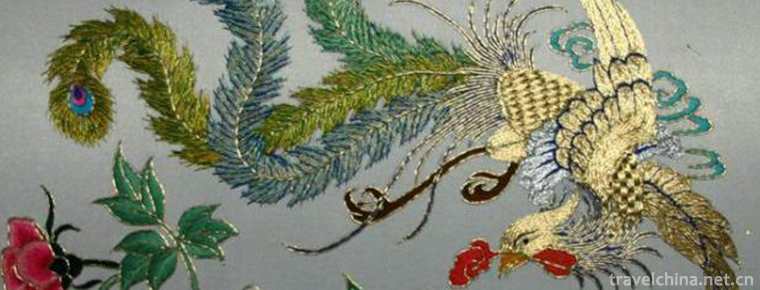
Han Embroidery
-
Qiqu Mountain Scenic Area
Qiqu Mountain Scenic Spot is located about 9 kilometers north of Zitong County, Mianyang City, Sichuan Province. It is located at the southern end of Jianmen Shudao Scenic Spot.
Views: 158 Time 2018-12-17 -
Shuangrufeng Scenic Area
Guizhou Shuangrufeng Scenic Area is located in Zhenfeng County, Guizhou Province. It is 9 kilometers away from the county town and on the main road of Zhenfeng-Guiyang
Views: 205 Time 2019-02-08 -
Changsha window of the world
Changsha World Window is located on the Liuyang River in the northeastern suburb of Changsha City, Hunan Province. It is a cultural theme park jointly invested by Hunan Radio and Television Media Co.,
Views: 196 Time 2019-03-17 -
Torch Festival
Torch Festival is an ancient traditional festival of the Yi, Bai, Naxi, Jinuo and Lahu nationalities. It has profound folk cultural connotations and is known as the "carnival of the East".
Views: 291 Time 2019-05-05 -
Mongolian Medicine
Mongolian medicine is mainly moxibustion, and is good at using fire needles. Fire needle is a method of treating diseases by rapidly puncturing the acupoints with red-hot needle tips. This method has
Views: 339 Time 2019-06-04 -
Brewing Techniques of Shaoxing Yellow Rice Wine
Shaoxing has a long history of brewing wine, which can be traced back to the Spring and Autumn Period and the Warring States Period. By the time of the Northern and Southern Dynasties, it was well-kno
Views: 184 Time 2019-06-14 -
Vegetarian production skills
Gongdelin vegetarian food originated in temples. During Tongzhi period of Qing Dynasty, Temple vegetarian food gradually entered society. In 1922, the disciples of Wikipedia, a Buddhist monk at Changj
Views: 303 Time 2019-06-17 -
Wudang Mountain Palace Viewing Taoist Music
Wudang Mountain Palace Taoist Music is the product of the combination of excellent traditional folk culture in Qinba area of Hubei Province and court music from Tang Dynasty to Ming Dynasty. It is the
Views: 252 Time 2019-06-30 -
Beijing University of Chinese Medicine
Beijing University of Traditional Chinese Medicine is a national key university with traditional Chinese medicine as its main subject. It is directly under the management of the Ministry of Education.
Views: 150 Time 2019-09-22 -
Music that Ding Zhen likes
Zhaxi Dingzhen (Chinese Name: Ding Zhen), Tibetan, lives in Litang County, Ganzi Prefecture, Sichuan Province.
Views: 262 Time 2020-12-07 -
Suining City honor
Seven Star City of public welfare and charity in China
Views: 373 Time 2020-12-16
